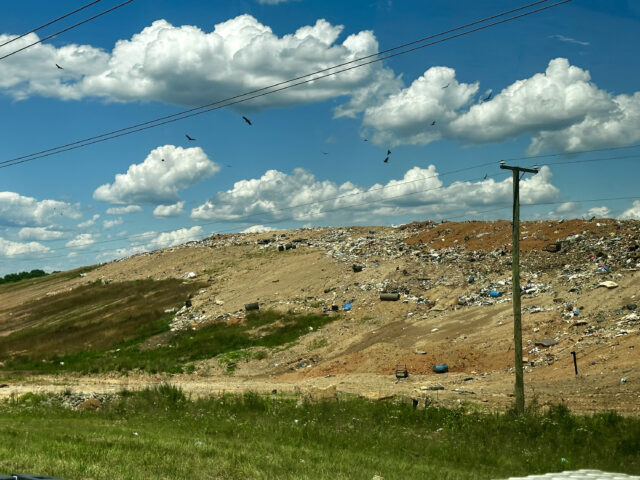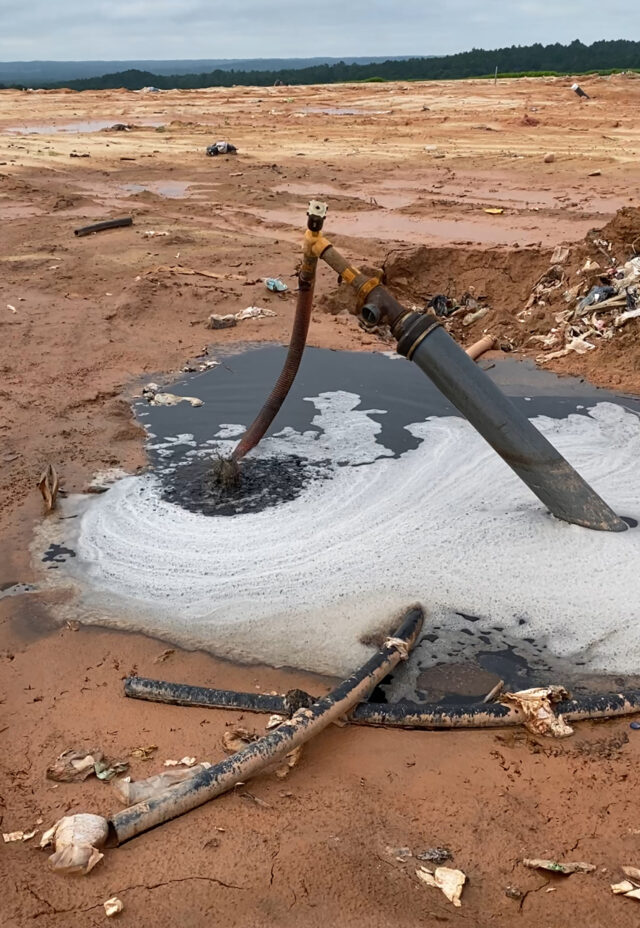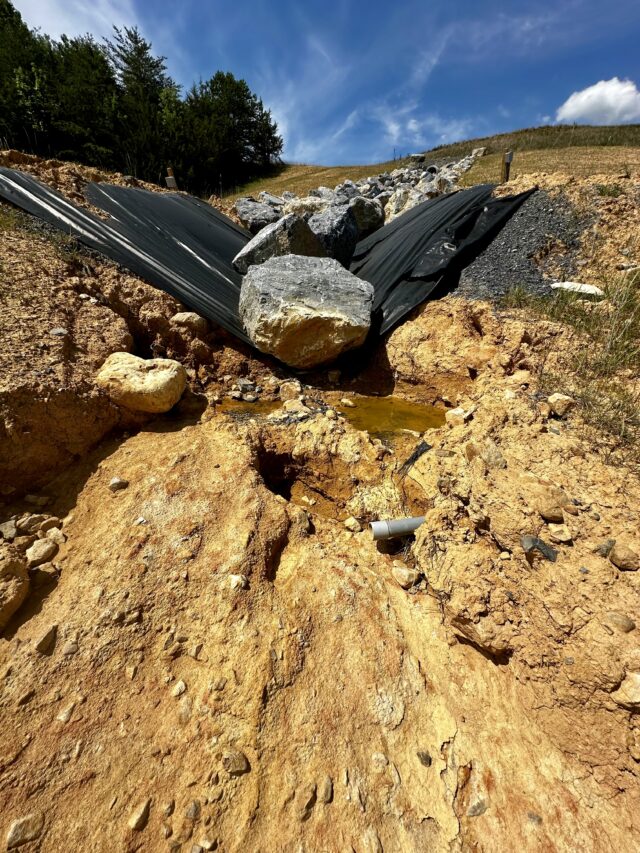Navigating Leachate Management in Landfills

*As seen in Waste Advantage Magazine, August 2024 Issue
The prevention of leachate is the most cost-effective and proactive approach landfill operators can implement to ensure efficient landfill operations. Below we’ll examine best practices and ways to reduce the creation of leachate at landfills.
Leachate management is a complex and costly challenge that many find difficult to navigate. With ever-changing, stringent regulations and uncertainties surrounding per- and polyfluoroalkyl substances (PFAS) and (PFOA), options for leachate disposal are dwindling, forcing landfill operators to explore new and often expensive technologies. As a result, managing leachate remains one of the most significant and costly issues affecting landfill operations today.
When determining a leachate management plan, first consider minimizing the working face operations, surrounding slopes, and the recently closed phases. Main priorities should be addressing erosion on slopes that need repairs and ensuring gas and groundwater monitoring wells have heightened soil cones around them to ensure the stormwater is directing away from the casings rather than into them, which can result in ponding water and a reservoir forming.
Some questions to consider when determining a path forward are, “What if we considered the operational aspects of leachate management during initial discussions?” and “What if we focused on preventing leachate creation rather than just its disposal?” The most efficient way to manage leachate is to prevent the creation of it. As landfill professionals, we have substantial control over mitigating leachate creation through optimized operations.

Ponding around a damaged well casing. This is a result of failure to implement best management practices during waste placement and cover application.
Prevention of Leachate Creation
Minimize Active Working Areas: Think of a football field’s 20-yard line representing the active area, with the remaining 80 yards equating to 1 acre (roughly 200 feet by 200 feet) of exposed waste. On a cloudy day with intermittent rain, even 1 inch of rain over this area results in nearly 27,000 gallons of stormwater converting into leachate. Minimizing the working face to the smallest safe operational area is crucial in minimizing infiltration.
Cover Soils and Alternative Daily Covers (ADCs): Intermediate and daily cover soils are not created equally, and landfills can be limited by the soil types available to use as cover. However, regardless of the soil used, most sites have articulated dump trucks, often used to haul materials, that are perfect for sealing the covered area by rolling back and forth as you would with a smooth drum roller. This can decrease the amount of leachate creation through infiltrated water during a storm event. Use of ADCs, like tarps, spray foam, or chipped wood waste, is a no-brainer when it comes to conserving airspace and reducing operational expenses if used correctly. How often are they improperly used though? Inappropriate use can exacerbate leachate creation.

Using torn tarps or placing them so they don’t completely cover the waste is akin to going outside while it’s raining with a colander for an umbrella—and expecting it to keep you dry.
Spray-on ADCs, such as foams or posi-shell, should not be applied immediately prior to a heavy storm event because they may be ineffective at stopping water infiltration.
While chipped wood waste can absorb large quantities of water and provide a durable base on the temporary road, when not applied correctly and placed on areas lacking adequate cover, the chips slowly release the water they are holding over time to the waste beneath them, creating additional leachate for the operation to manage. However, when properly mixed with soil and used in areas where vegetation is hard to achieve, the benefits may likely outweigh the impact of the additional creation of leachate.
Implement Stormwater Runoff Best Management Practices (BMPs): Basic measures like installing berms and terraces, and controlling stormwater peak runoff rate, volume, and velocity can significantly impact erosion control. Training equipment operators to integrate berms into fill sequencing plans can save costs and control erosion. Consider adding this as part of your landfill operator training. Additionally, temporary controls such as silt fences, straw bales, filter socks, and diversion berms should be used on landfill slopes near active or improperly covered areas.
Strategic Landfill Design: Design landfills to shed stormwater efficiently through strategic cell construction. This involves constant adjustments to site contours, influencing stormwater run-on and runoff patterns. For completed waste disposal areas, permanent controls like grading, recontouring, and revegetation are essential.
Erosion Control Measures: Implement erosion control BMPs, such as seeding to prevent soil displacement and diverting uncontaminated surface flows away from disturbed areas. Upon completing new cell construction, install rain flaps to prevent excess runoff from entering the leachate collection system.
By focusing on these preventive measures, we can better manage leachate creation and significantly reduce the operational and financial burdens associated with leachate management.

About the Author
Crystal StapleySustainability Manager
Crystal is the Sustainability Manager for the Waste & Recycling team at LaBella Associates. Her primary role is to support LaBella’s team of landfill operations consultants. Crystal started her career in the waste industry nearly 2 decades ago as a Heavy Equipment Operator and has experience in landfill construction, management, design, and daily operations. Spearheading a “Field Approach” Operator Training Program, she continues to enhance employee’s knowledge and skills in landfill operations.